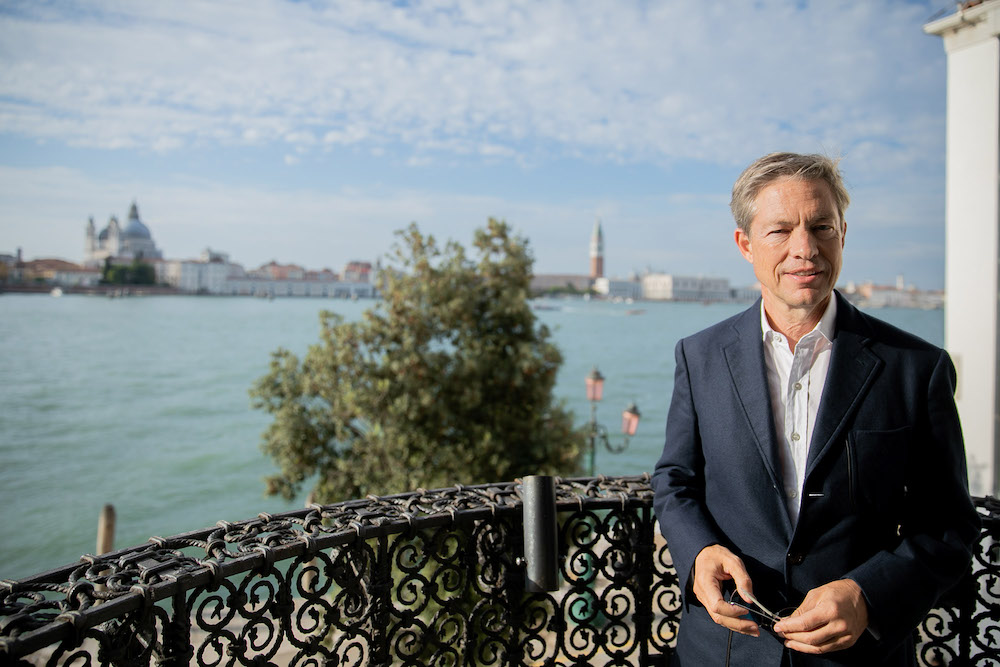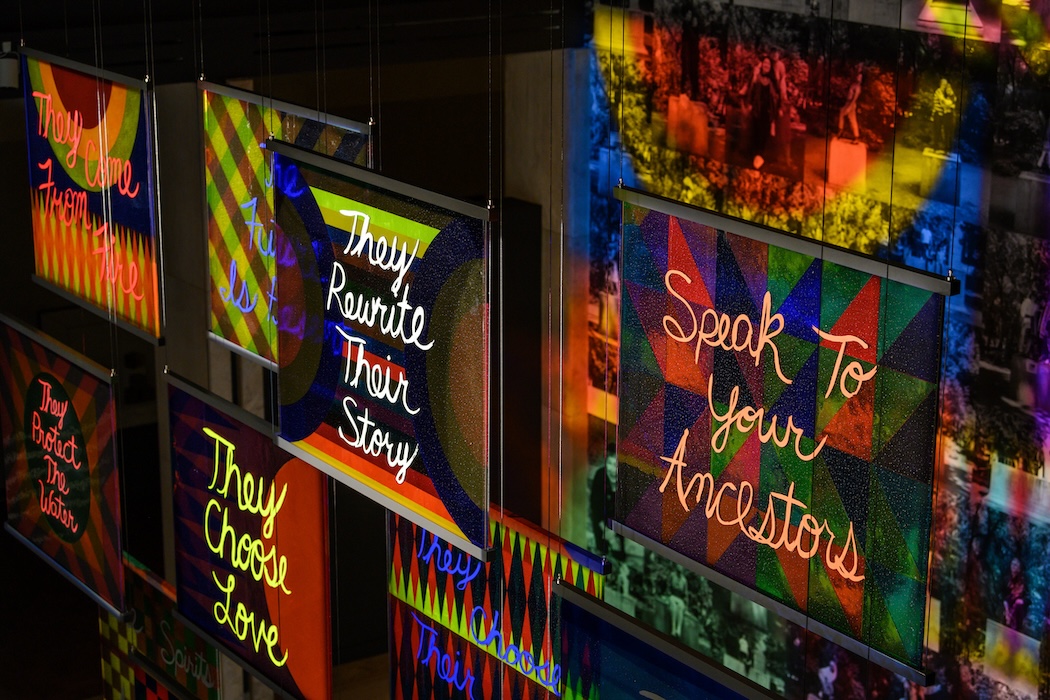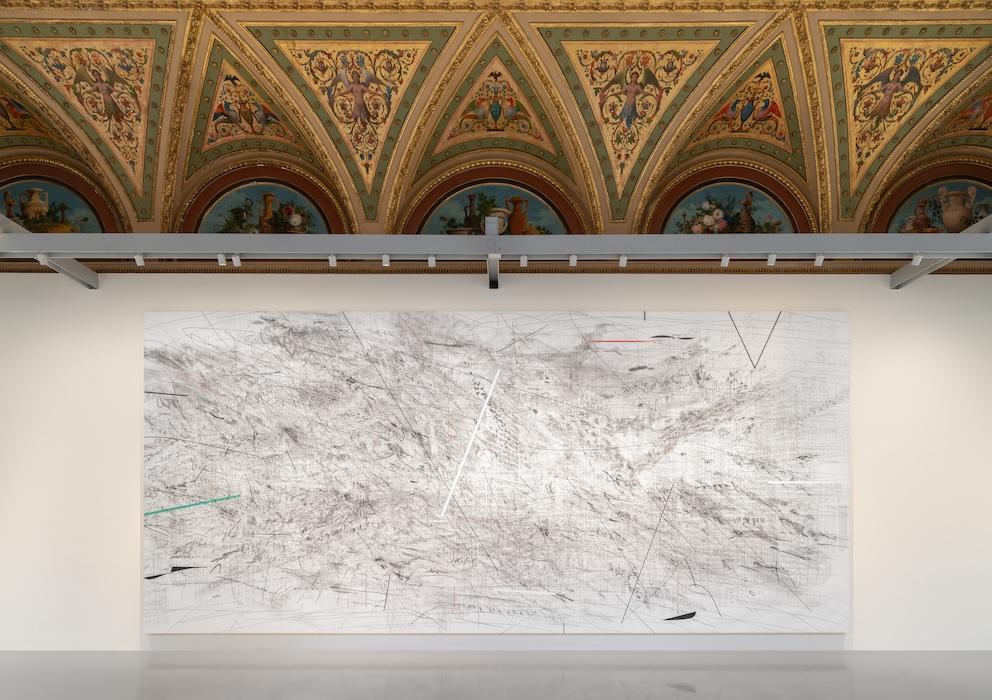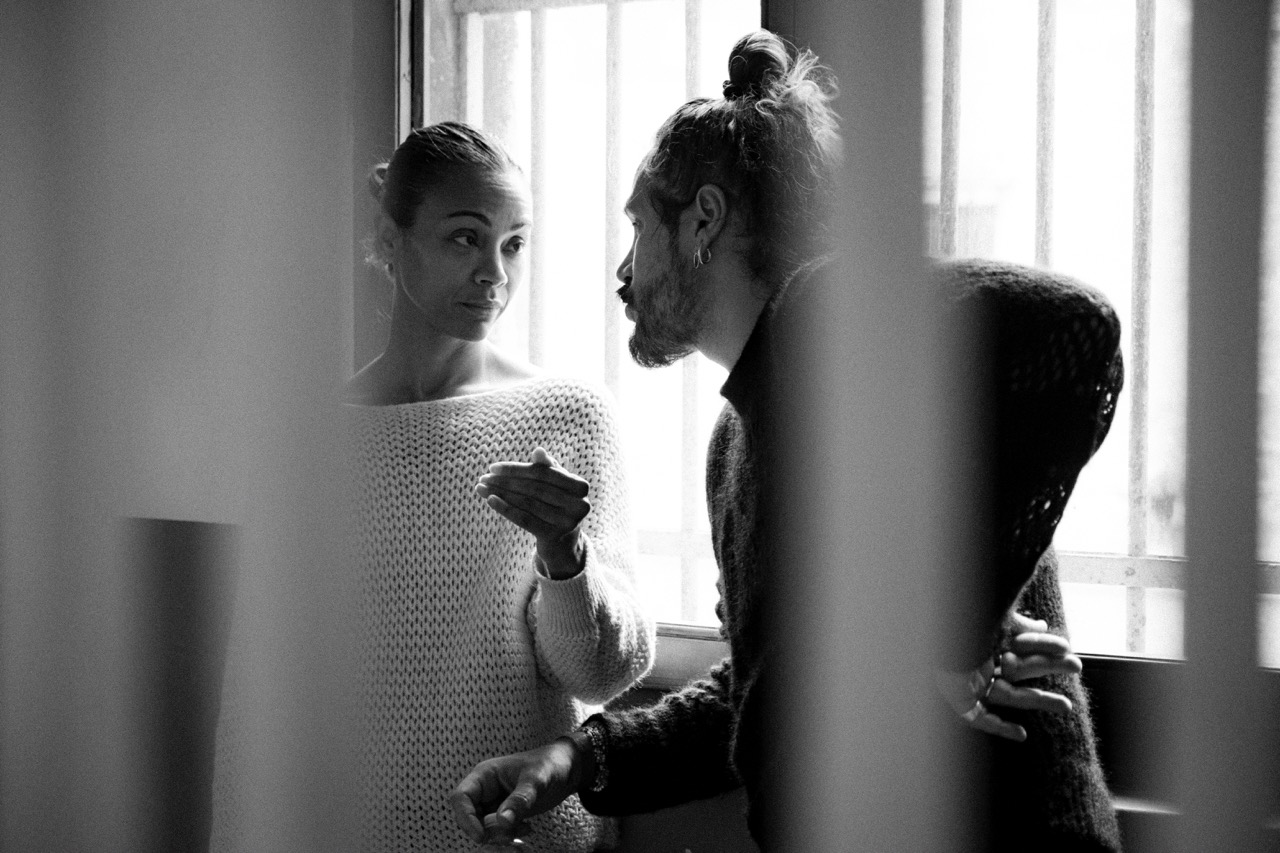Nicolas Berggruen Expands The Berggruen Institute to Venice
In Renaissance Venice, it was primarily wealthy patrons who supported arts and culture—like the Foscari Family, which was responsible for the construction of Ca’Foscari; or Alvise “Luigi” Cornaro, who supported the career of Veronese artist-architect Giovanni Maria Falconetto; or Filippo Vincenzo Farsetti, who later in the 18th century housed his immense art collection filled with Titian, Rembrandt, and Rubens at his residence Ca’Farsetti on the Grand Canal that was visited by Goethe.
In the last century, modern-day patrons like Peggy Guggenheim opened their collections to the public. In even more recent years the likes of François Pinault, the founder of luxury conglomerate Kering, who has Palazzo Grassi and Punta della Dogana. And Bernard Arnault’s luxury conglomerate LVMH has Espace Louis Vuitton Venezia. Now, Venice has a new patron in town: Nicolas Berggruen.
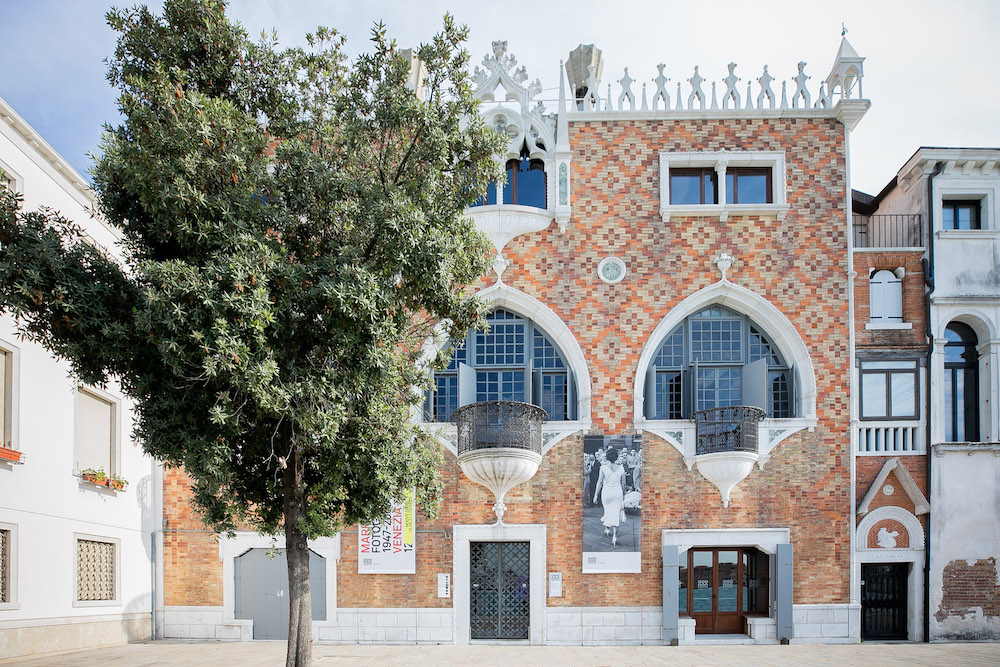
Casa dei Tre Oci, courtesy of the Berggruen Institute opening, photo © Marta Buso.
What is the The Berggruen Institute?
The billionaire philanthropist, investor, and founder of The Berggruen Institute, a global think tank, sees Venice as a strategic location for his intellectual and cultural endeavors. The Berggruen Institute is a bridge connecting Los Angeles, where it is headquartered, to Beijing, home of the Berggruen China Center at Peking University. Plans to build a Berggruen Institute building by Herzog & de Meuron in the Santa Monica Mountains of California are currently underway.
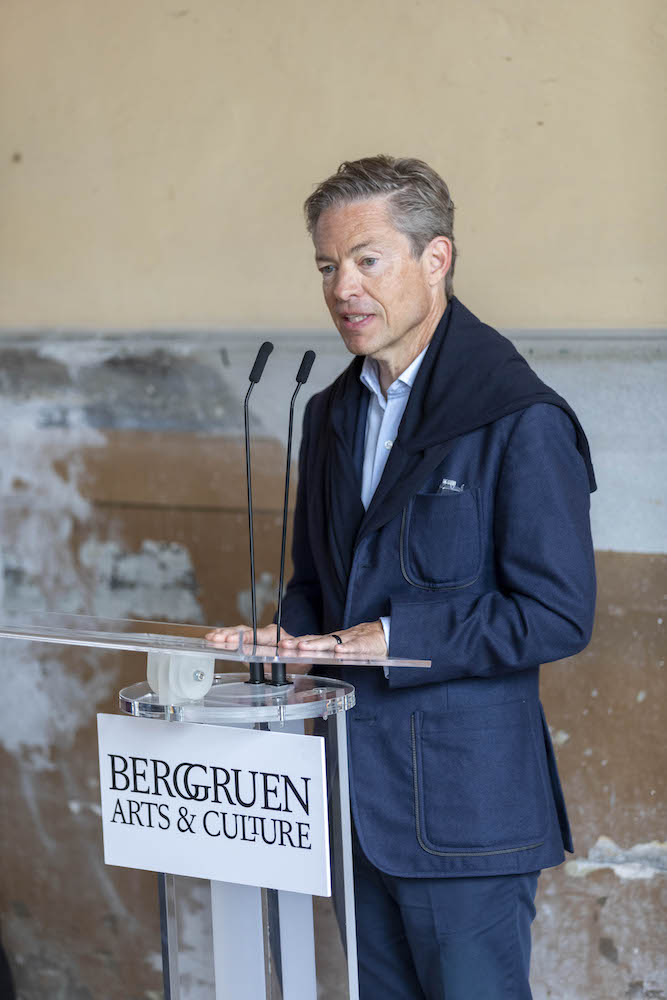
Nicolas Berggruen, photo by Luca Zanon, courtesy of the Berggruen Institute.
“For centuries it has been at the crossroads of cultures, of ideas, of invention, around everything from governance, the system of the donor here was quite innovative at the time. It has been at the crossroads of culture, still is today in terms of commercial exchange,” Berggruen told the audience at a recent symposium in Venice last month. “We felt that we need a place that, in essence, is a place that is more neutral, embraces dialogues, and maybe a bridge between Eastern and Western thinking, especially these days. The way we work at the institute is across disciplines. So we engage on purpose with thinkers, philosophers, but also artists, policymakers, scientists, technologists, so that the ideas can live from all of these different disciplines.”
Berggruen has had his eyes set on Venice, a city he had been visiting since his youth. In 2021 he acquired Casa dei Tre Oci on Giudecca through the Nicolas Berggruen Charitable Trust, followed by the acquisition of Palazzo Diedo in the Cannaregio district, and most recently Palazzo Malipiero on the Grand Canal. Berggruen tasked architect Silvio Fassi, a Venice native who is an expert in Venetian architecture, with renovating the three buildings. “If you change something, you have to verify the history of the building,” said Fassi about the complicated renovation process for the historical structures. “Following what was something that does not exist anymore.” Here is a rundown of Berggruen’s projects in Venice.

Casa dei Tre Oci, courtesy of the Berggruen Institute opening, photo © Marta Buso.
Casa dei Tre Oci (House of Three Eyes): The Berggruen Institute’s European Headquarters
Originally built in 1913 on Giudecca—an island Berggruen remembers fondly due to regular visits as a child—it was a residence and studio for artist Mario de Maria. This neo-gothic structure was named for the three large windows representing De Maria, his wife, and his son that grace its façade. A smaller, fourth window sits above the other three, as an homage to his daughter who passed away at a young age. It was known to welcome people from the art world and architect Renzo Piano stayed there for a period after Maria’s death. The Fondazione di Venezia acquired the building in 2000, renovating it before opening it to the public in 2012 as a space dedicated to photography exhibitions.
Casa dei Tre Oci serves as the European headquarters for the Berggruen Institute. The Berggruen Institute announced Lorenzo Marsili as the inaugural director in June and welcomed European intellectuals including Hans Ulrich Obrist, Francesca Bria, and Giorgio Agamben to participate in a series of talks at Casa dei Tre Oci. Guests were invited to tour the space before it closes for renovations, to be officially reopened in 2024.
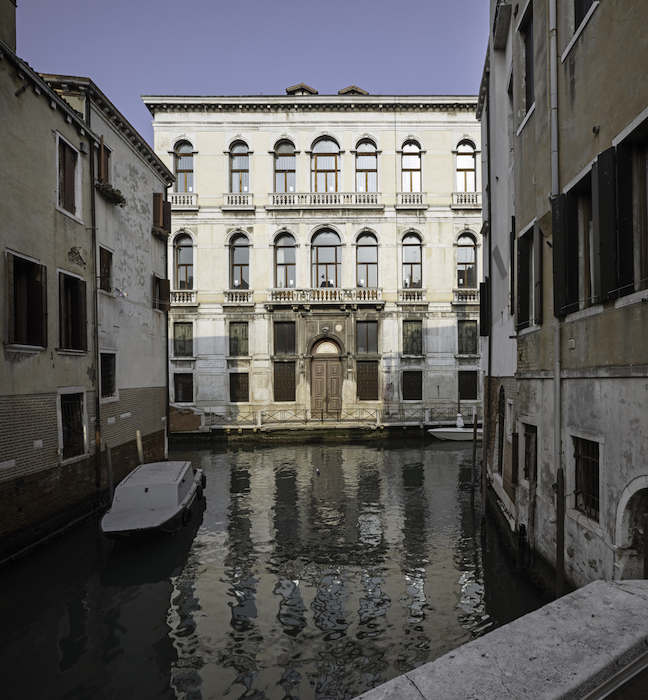
Palazzo Diedo, courtesy of the Berggruen Institute.
Palazzo Diedo: Home of Berggruen Arts & Culture
Just as Guggenheim had her eponymous collection, Pinault has Palazzo Grassi and Punta della Dogana, and Arnault has Espace Louis Vuitton Venezia, so too will Berggruen have his own space, Berggruen Arts & Culture at Palazzo Diedo. It is slated to open in 2024, coinciding with the start of La Biennale d’Arte di Venezia. The building will be composed of three floors of exhibition space, a residential floor for artist residencies, and a ground-floor eatery with a terrace helmed by Cipriani.
The 17th-century baroque-style palazzo was unfinished by architect Andrea Tirali. It eventually was converted into a primary school. The team recently uncovered celestial frescoes on the ceiling, but the artist—who some speculate could be the Italian painter Brusaferro—is yet to be officially identified. At the moment, the Palazzo is shrouded in a yellow word art piece by Los Angeles artist Sterling Ruby, reading, “Sunrise\Sunset\Some Rise\Some Rest” in bold, black letters.
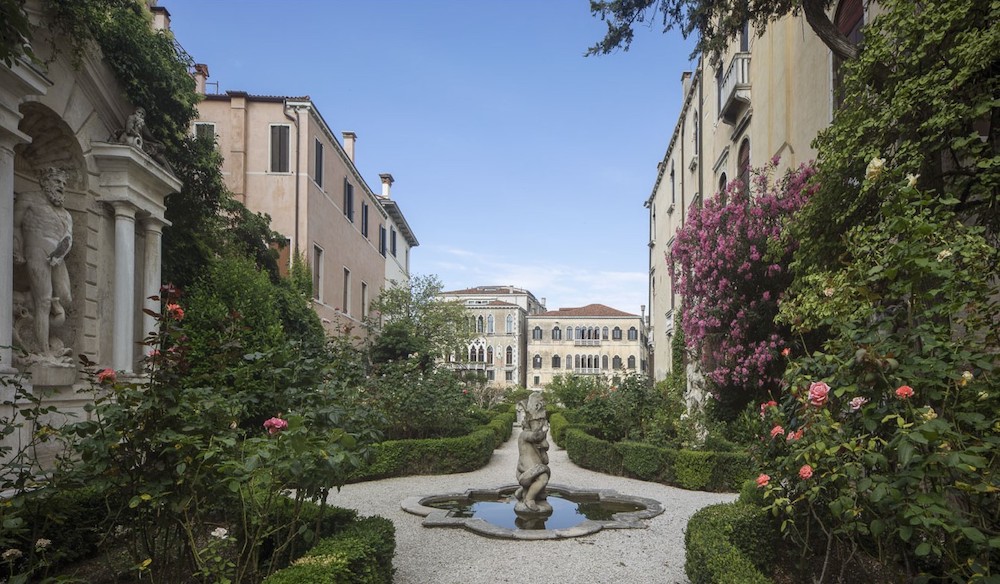
Palazzo Malipiero, courtesy of The Berggruen Institute.
Palazzo Malipiero: A Place for Nicolas Berggruen to Entertain and Host
Berggruen’s latest acquisition, Palazzo Malipiero, boasts one of the most beautiful gardens along the Grand Canal in Venice. It was even immortalized by British artist William Logsdail in 1882. Berggruen will use Palazzo Malipiero, which has a 700-square-meter garden, and 1,800 square meters of living space spread across two apartments, as his primary residence while in Venice. Doubling as a place to host and entertain guests, the Byzantine structure is thought to have been built in the 11th century by the Soranzo Family before the Malipieri Family acquired it in 1590. Giacomo Casanova was thought to have lived there in the 1740s until a scandal caused Senator Malipieri to banish him. The Barnabò Family, the last owners, purchased the building in 1951.
“The biggest renovations were in the 16th/17th centuries,” said Fassi. “Then the last big renovations were in the ‘50s.” The Barnabò Family commissioned frescoes depicting the four seasons to be painted in the drawing room. Although the palazzo will need extensive renovations, original features, like the Palladiana, which uses larger marble slabs than terrazzo, as well as terrazzo flooring.
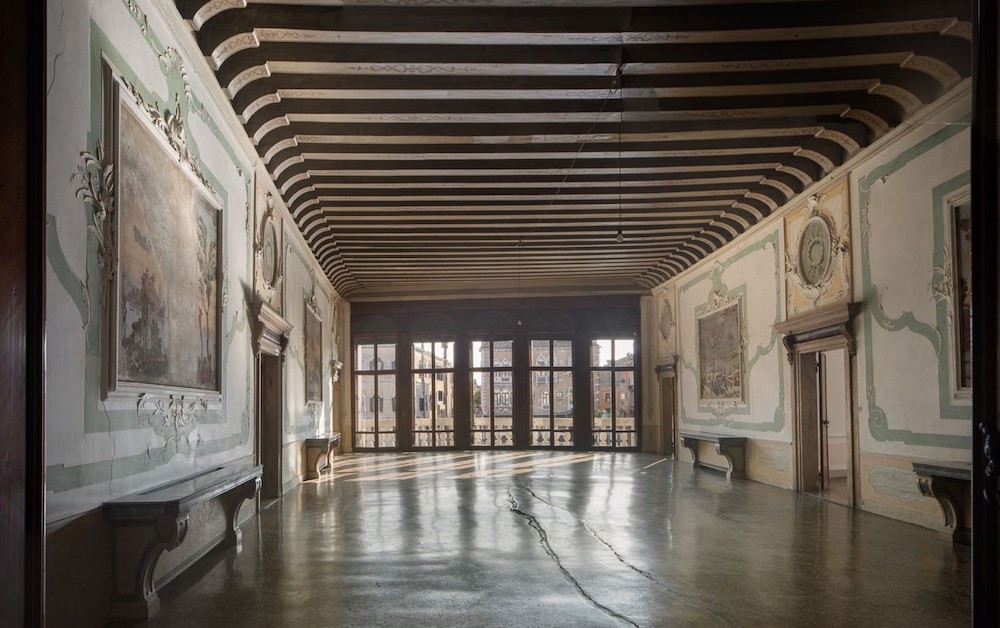
Palazzo Malipiero, courtesy of The Berggruen Institute.



